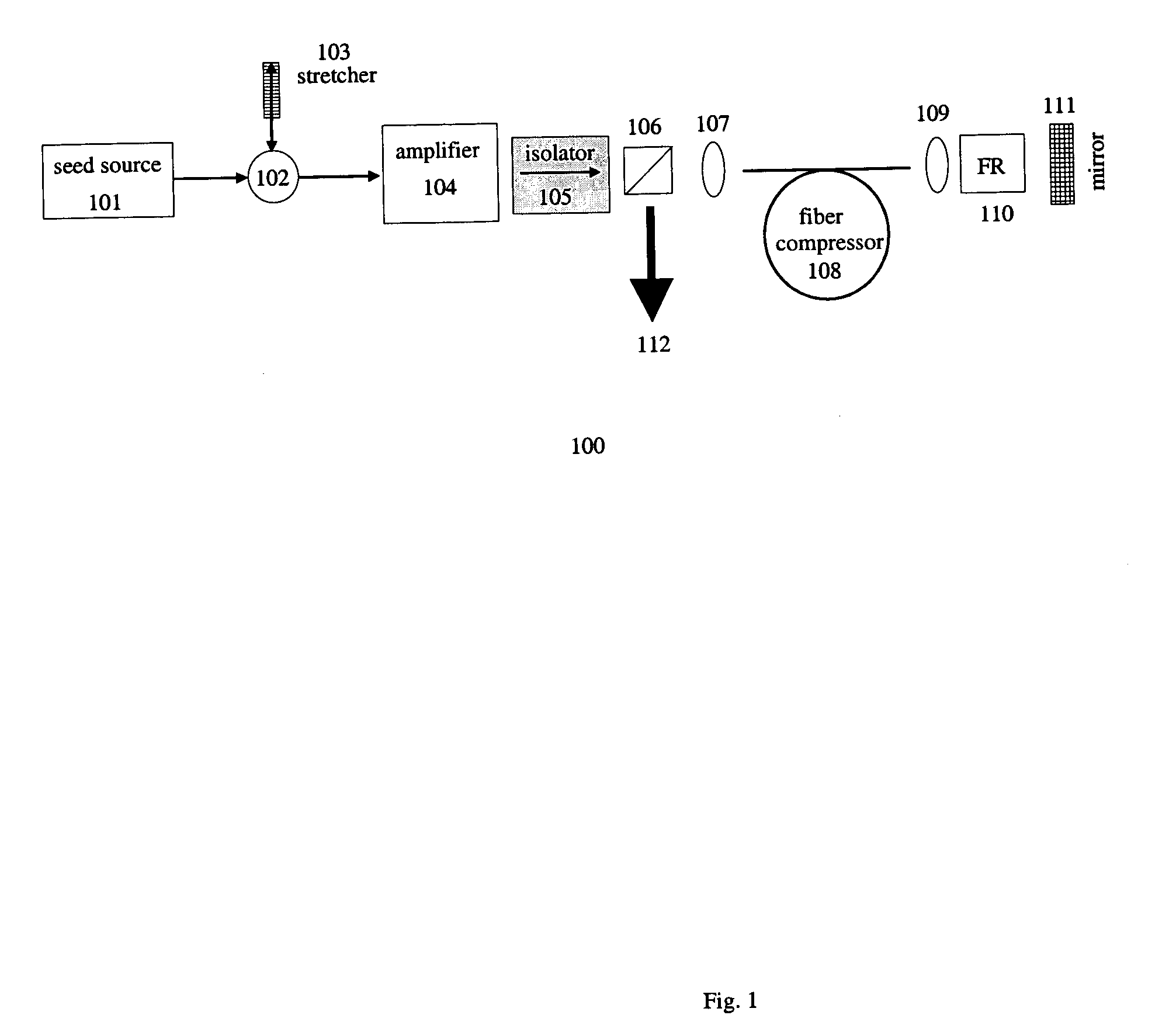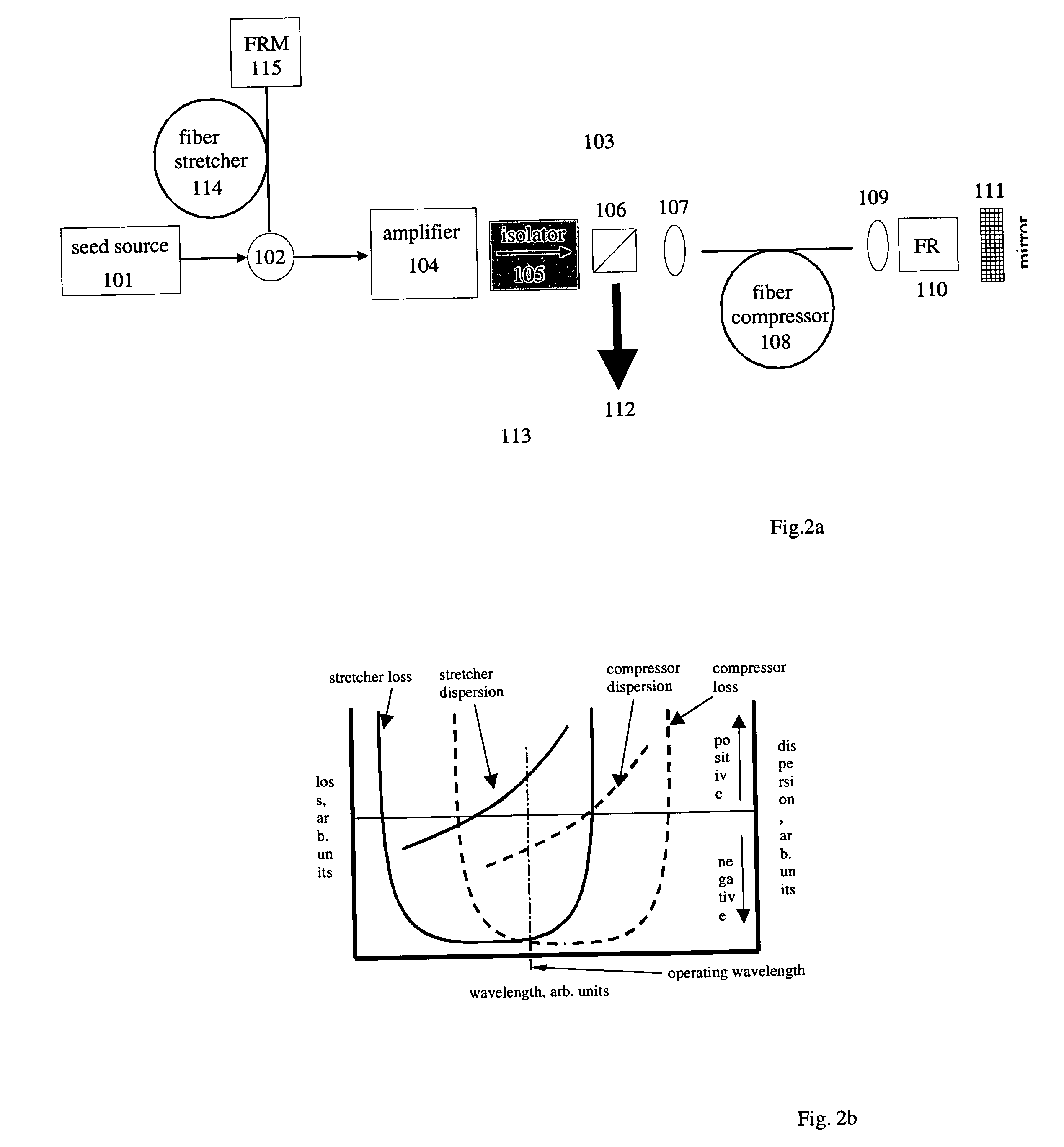All-fiber chirped pulse amplification systems
a chirped pulse amplification and all-fiber technology, applied in the field of ultracompact high-energy fiber pulse source construction, can solve the problems of requiring a significantly larger amount of space for their operation, the use of bulk stretchers and compressors is generally much more difficult to align, etc., and achieves the effect of greatly enhancing the performance of ‘conventional’ chirped pulse amplification systems and high utility
- Summary
- Abstract
- Description
- Claims
- Application Information
AI Technical Summary
Benefits of technology
Problems solved by technology
Method used
Image
Examples
Embodiment Construction
[0040] A detailed description of the preferred embodiments of the invention will now be given referring to the accompanying drawings.
[0041]FIG. 1 represents an exemplary embodiment of a chirped pulse amplification system 100 according to the present invention. The system comprises a short pulse seed source 101. The seed source 101 generally supplies pulses having a width less than 50 picosecond. The pulses from seed source 101 are injected into an optical circulator 102 and a fiber Bragg grating stretcher 103 temporally stretches the pulses by at least a factor of ten. All-fiber circulators or bulk optic equivalents of optical circulators can be implemented. U.S. patent application Ser. No. 10 / 608,233, which is incorporated by reference for all it discloses, discusses such circulators, which will not be further described. The stretched pulses are then directed via the circulator output to an optical amplifier system 104. The optical amplifier system 104 can comprise a bulk-optic mu...
PUM
 Login to View More
Login to View More Abstract
Description
Claims
Application Information
 Login to View More
Login to View More - R&D
- Intellectual Property
- Life Sciences
- Materials
- Tech Scout
- Unparalleled Data Quality
- Higher Quality Content
- 60% Fewer Hallucinations
Browse by: Latest US Patents, China's latest patents, Technical Efficacy Thesaurus, Application Domain, Technology Topic, Popular Technical Reports.
© 2025 PatSnap. All rights reserved.Legal|Privacy policy|Modern Slavery Act Transparency Statement|Sitemap|About US| Contact US: help@patsnap.com



